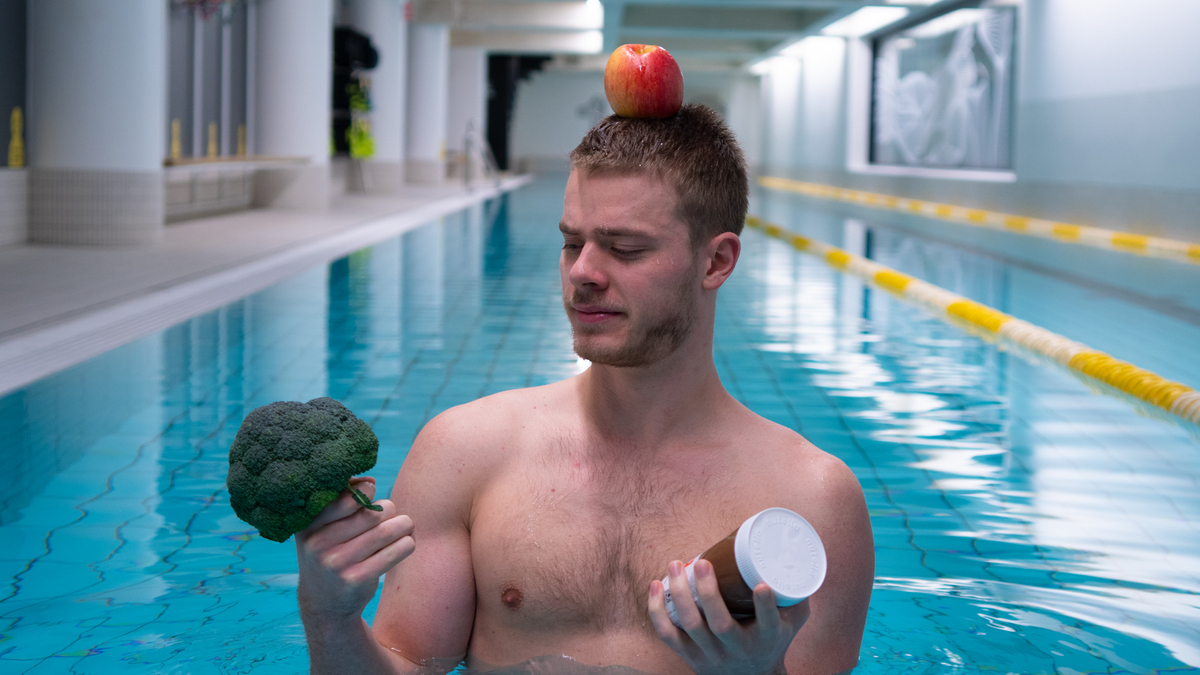Swimming blog - TRAINING and HEALTH Why does swimming make me so hungry?
You have just completed a great swimming workout and suddenly this intense hunger hits you. Your stomach feels like a bottomless pit, way more than during other endurance sports. Sound familiar? Let us explain to you why this happens to swimmers.
Exercise and hunger
Simply said, hunger is a signal from the body that it’s in need of fuel. Fuel circulates in the body through your blood, and fuel is also stored in your muscles and in your liver. When the fuel levels in your blood drop, your body reacts and triggers a response by making you hungry to refill the fuel.
Exercise can either make you hungry or decrease your hunger, which depends on the intensity of the workout. Low intensity workouts triggers a hunger response in the body. Low intensity swimming will therefore make you hungry. On the other hand, higher intensity workouts usually reduce your hunger. During high intensity workouts signals are released that indicate the body is full of fuel, which in return makes you less hungry.
Overall, higher intensity workouts seem to reduce hunger, but in the pool however this is not the case. After high intensity swimming you’ll still be hungry, thanks to the temperature of the water. The cold temperature of water triggers a contratrictive signal, which overrides the signal of hunger suppression, and thus makes you hungry. How does that work?
Temperature influences appetite
Normally during any hard workout blood is taken away from the stomach towards the skin to release heat from the body. Digesting food for fuel is put on hold, which suppresses your hunger feeling. However, most swimming pools are 10°C below body temperature. Therefore while swimming blood flow isn’t taken away towards the skin to release heat but the blood flow to the stomach is maintained. Therefore, the stomach can do its work as usual, which means hunger!
In addition, two studies in which participants were exposed to the cold show an increase in hunger. In both studies food intake was measured and compared between participants that were in a room with a normal temperature (26°C) or a 18°C temperature room. In both studies the amount of food consumed after 2.5 hours in the colder room was higher. More energy is burnt in the cold to keep the body warm, which seems to trigger a response that increases hunger to compensate for the extra energy burnt. It is important to note heat loss in water is far greater than that in air, which means that in a room of 26°C the body can maintain its body temperature without any extra heat production. However in 26°C water, the body needs to produce heat and burn extra energy to counteract the heat loss in water.
All things considered, cold water seems to trigger a response which makes you hungrier after swimming compared to other endurance sports in which you burn the same amount of energy.
What to eat?
Since swimming makes you hungry, you have to be mindful not to overeat after a swimming session. Plan your post-swim nutrition ahead of time and stick to this plan to not overindulge after your swim session. Your post-swimming meal should include some proteins and healthy fats to increase fullness. You could for instance have a bagel with salmon and avocado, some yogurt with nuts or eggs on toast. If you aren’t having a meal after your swimming session, bring a healthy snack to avoid post-swim hunger, for instance a peanut butter jelly, a protein-nut bar or a handful of trail mix. It can also be helpful to have a carbohydrate rich meal before your workout, this should be light and easily digestible, for instance fresh fruit, sandwich with lean meat or jam, oatmeal with banana or a granola bar. If you continue to struggle with hunger, then you should try to include a short post-swim run or HIIT workout, which will trigger a response which decreases your hunger.
Written by Saskia Postma.
